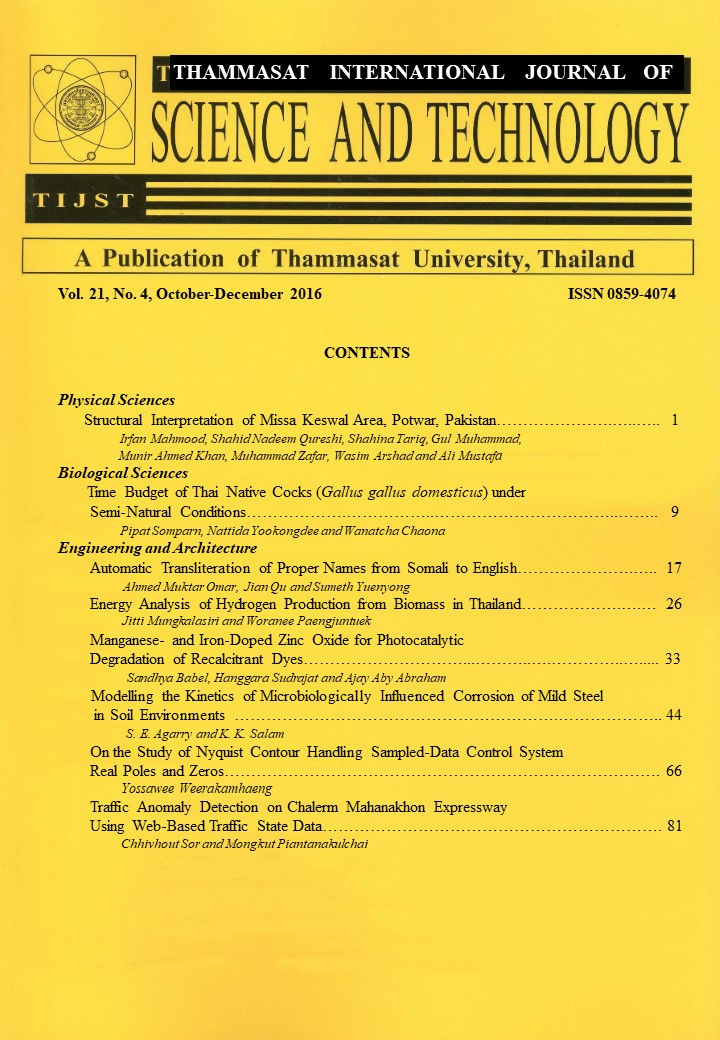Structural Interpretation of Missa Keswal Area, Potwar, Pakistan
Main Article Content
Abstract
This study pertains to interpretation of Missa Keswal area and identify the structures, source and reservoir formations and whether or not faulting prevailed in the reservoir formations. Six seismic lines were interpreted for the purpose. The four dip lines are oriented SE-NW whereas two strike lines are oriented NE-SW. Three reflectors namely Sakesar Limestone, Khewra Sandstone and Salt Range Formation of Eocene, Cambrian and Precambrian age have been selected and identified. Faults showing thrusting are also identified within these Formations. The root mean square velocities (Vrms), given in the velocity windows on the seismic section, were used to calculate average velocities and depth of the Formations. Seismic Interpretation of 2D data shows that the area was deformed by compressional tectonics and the structures were formed during two main episodes of deformation-initial normal faulting and subsequent thrusting. The structures are tightly folded and complexly faulted. Major thrusts and back thrusts bound the anticlinal and synclinal features. The Sakesar Limestone is present at a depth between 1700-3500 meters, Khewra Sandstone between 3500 – 4900 meters, whereas the depth of Salt Range Formation varies from 4300 – 5500 meters. The results show that the basement normal faults have influenced the above lying structures and the thrust and back faults in the area are due to compressional movements from northeast to southwest. The Sakesar and Khewra formations are continuous throughout the area and therefore, are good reservoirs of hydrocarbons
Article Details
How to Cite
Mahmood, I., Nadeem Qureshi, S., Tariq, S., Muhammad, G., Ahmed Khan, M., Zafar, M., Arshad, W., & Mustafa, A. (2016). Structural Interpretation of Missa Keswal Area, Potwar, Pakistan. Science & Technology Asia, 21(4), 1–8. retrieved from https://ph02.tci-thaijo.org/index.php/SciTechAsia/article/view/71996
Section
Physical sciences


